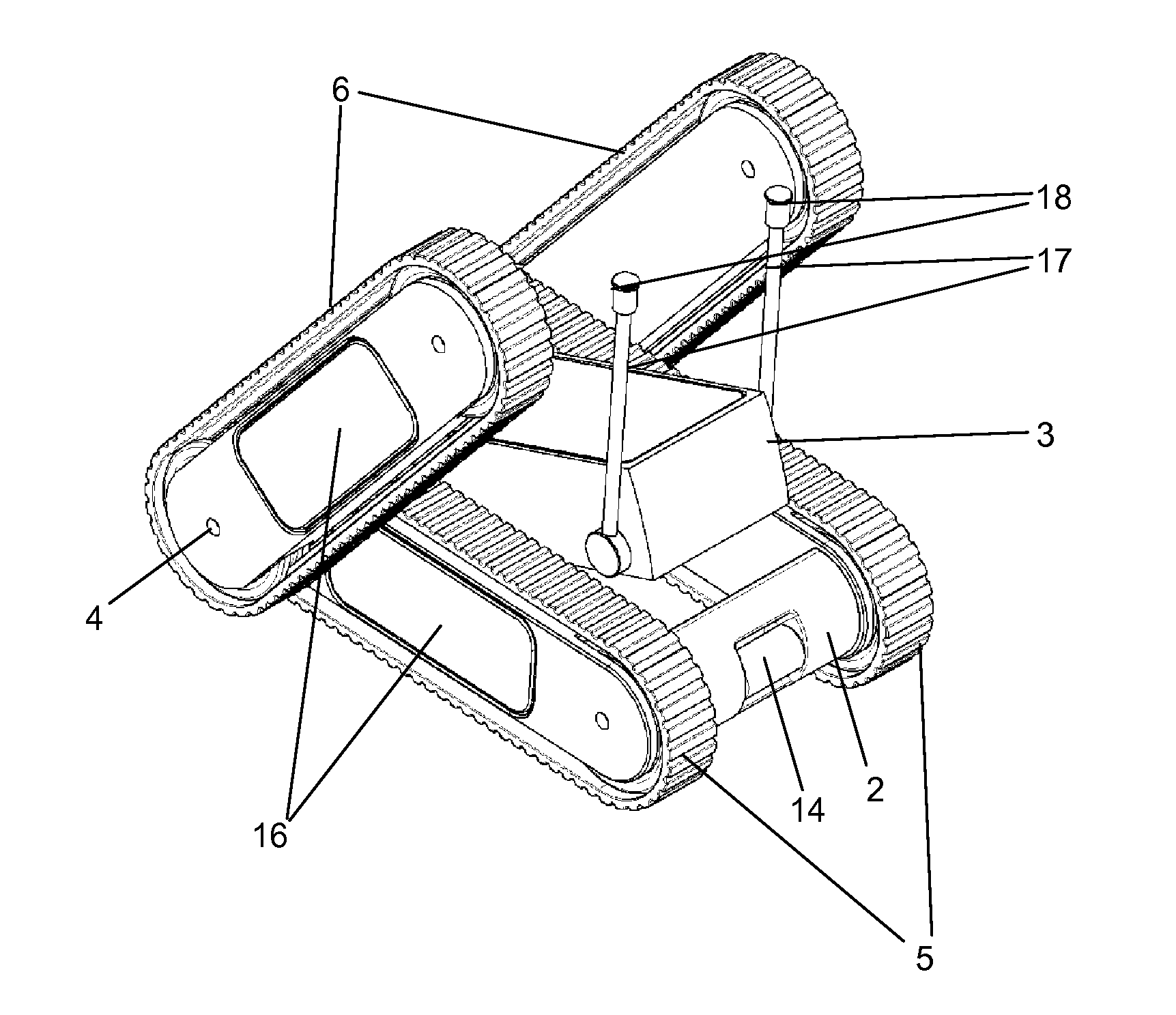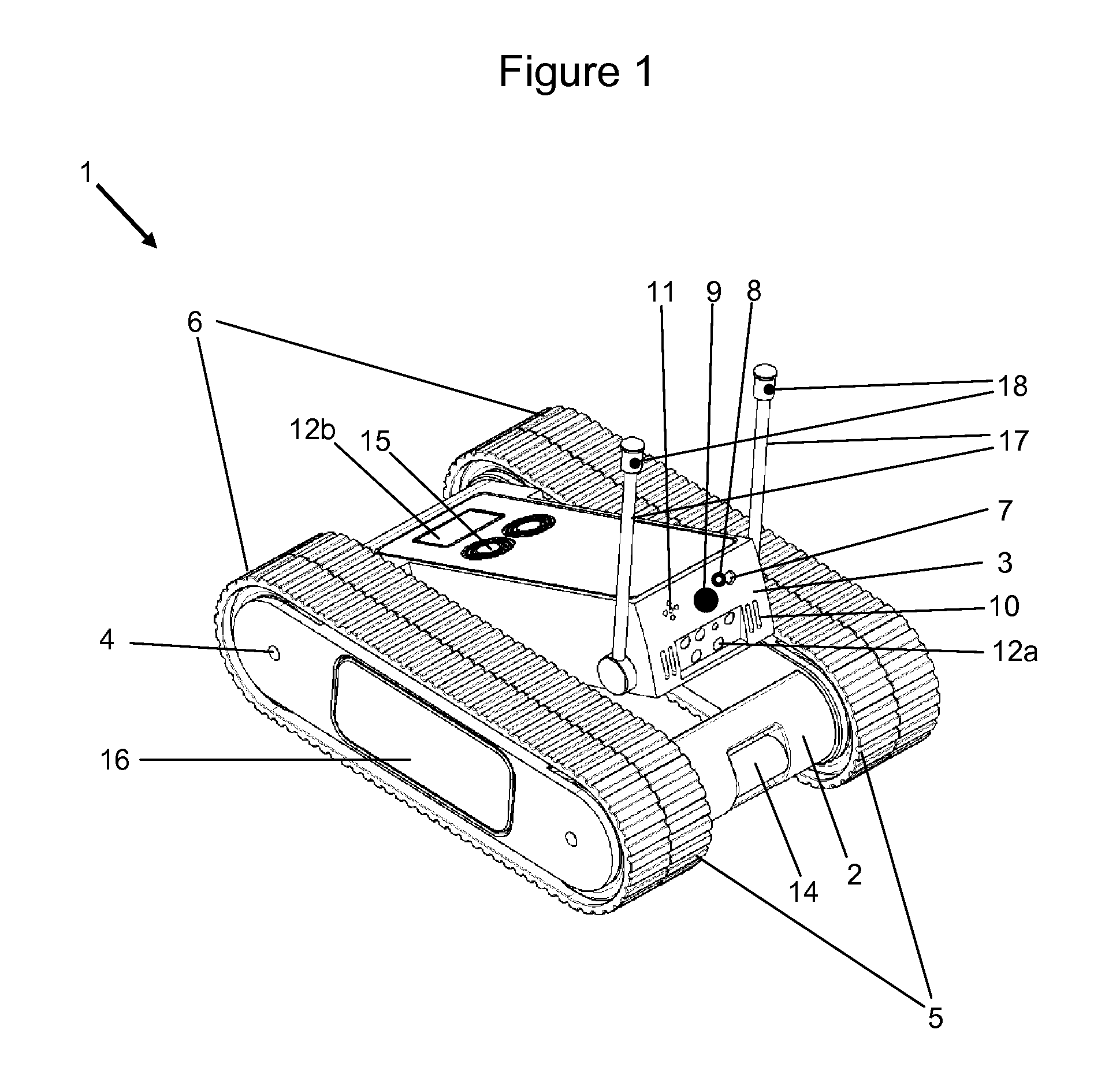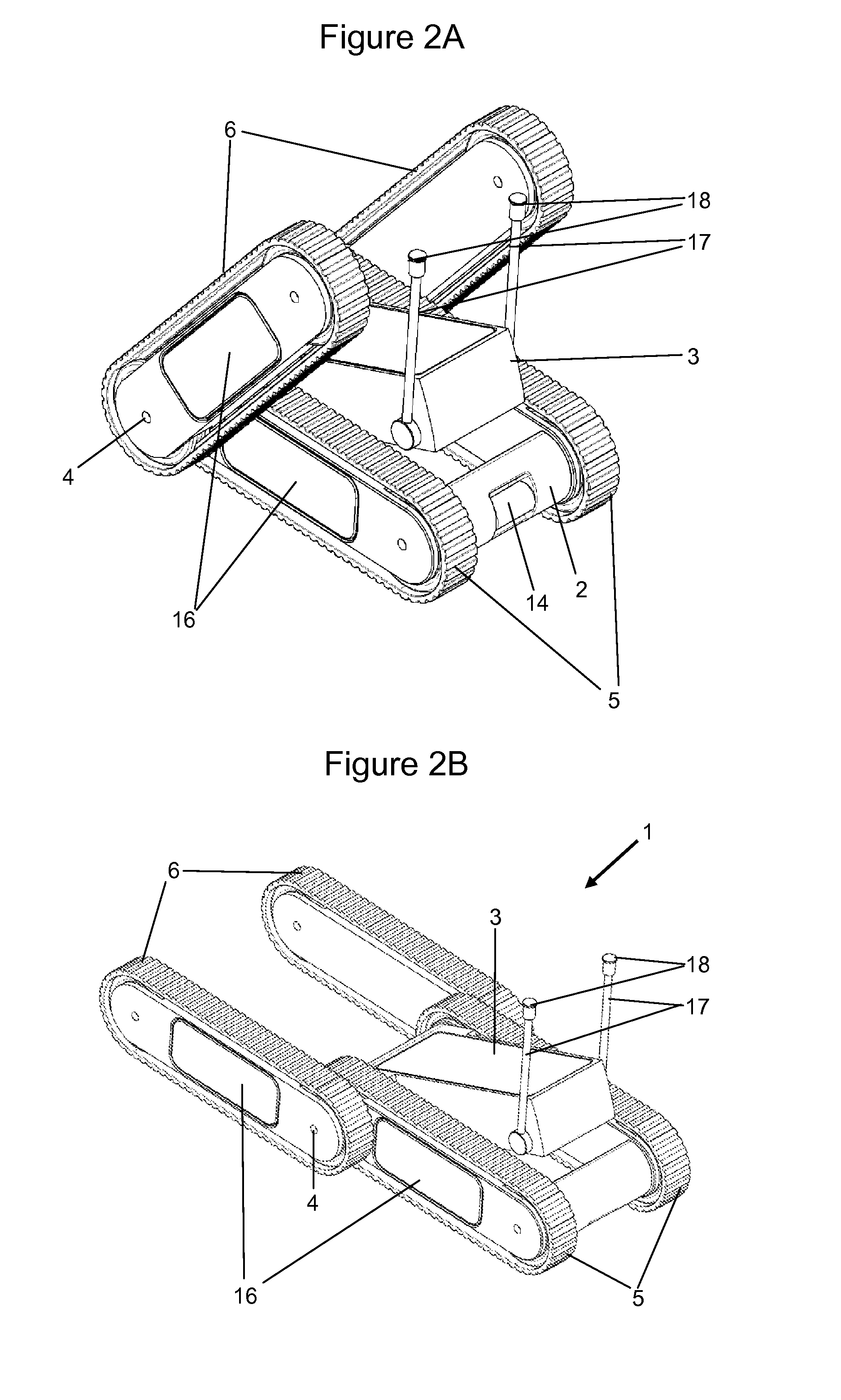Transformable Robotic Platform and Methods for Overcoming Obstacles
a robotic platform and transformable technology, applied in the field of robotics, can solve the problems of complex control system, limited operability of the robotic platform, and addition of another level of complexity to the task
- Summary
- Abstract
- Description
- Claims
- Application Information
AI Technical Summary
Benefits of technology
Problems solved by technology
Method used
Image
Examples
embodiment 101
[0142]FIG. 7 schematically shows a perspective view of an embodiment 101 of a bilateral robotic platform having an articulated operational assembly 103, a main frame 102, a axis 104, first pair 105 of tracks, second pair 106 of tracks, antennas 117, and sensors and detectors 118.
[0143]In second preferred embodiment, an operational assembly 103 is pivotally connected to a main frame 102 by a revolute joint via a universal joint 182.
embodiment 2
[0144]In embodiment 2, the robotic platform can switch into “Exploring Mode” according to which the operational assembly 103 is tilted and traversed according to commands sent by a remote operator in order to investigate regions of interest of the remote operator's choice. The articulation of operational assembly 103 enables the investigation of regions of interest all around the robotic platform's surroundings while eliminating the need to rotate the entire robotic platform.
[0145]In embodiment 2, universal joint 182 includes a slip ring mechanism to supply power and communication connections between operational assembly 103 and main frame 102 while providing continuous 360 degree tilting of the operational assembly 103 in either direction without tangling wires. Alternatively, the operational assembly 103 and the main frame 102 may include separable power supplying units and communicate over wireless channels in order to eliminate the need to incorporate a slip ring mechanism into ...
PUM
 Login to View More
Login to View More Abstract
Description
Claims
Application Information
 Login to View More
Login to View More - R&D
- Intellectual Property
- Life Sciences
- Materials
- Tech Scout
- Unparalleled Data Quality
- Higher Quality Content
- 60% Fewer Hallucinations
Browse by: Latest US Patents, China's latest patents, Technical Efficacy Thesaurus, Application Domain, Technology Topic, Popular Technical Reports.
© 2025 PatSnap. All rights reserved.Legal|Privacy policy|Modern Slavery Act Transparency Statement|Sitemap|About US| Contact US: help@patsnap.com



